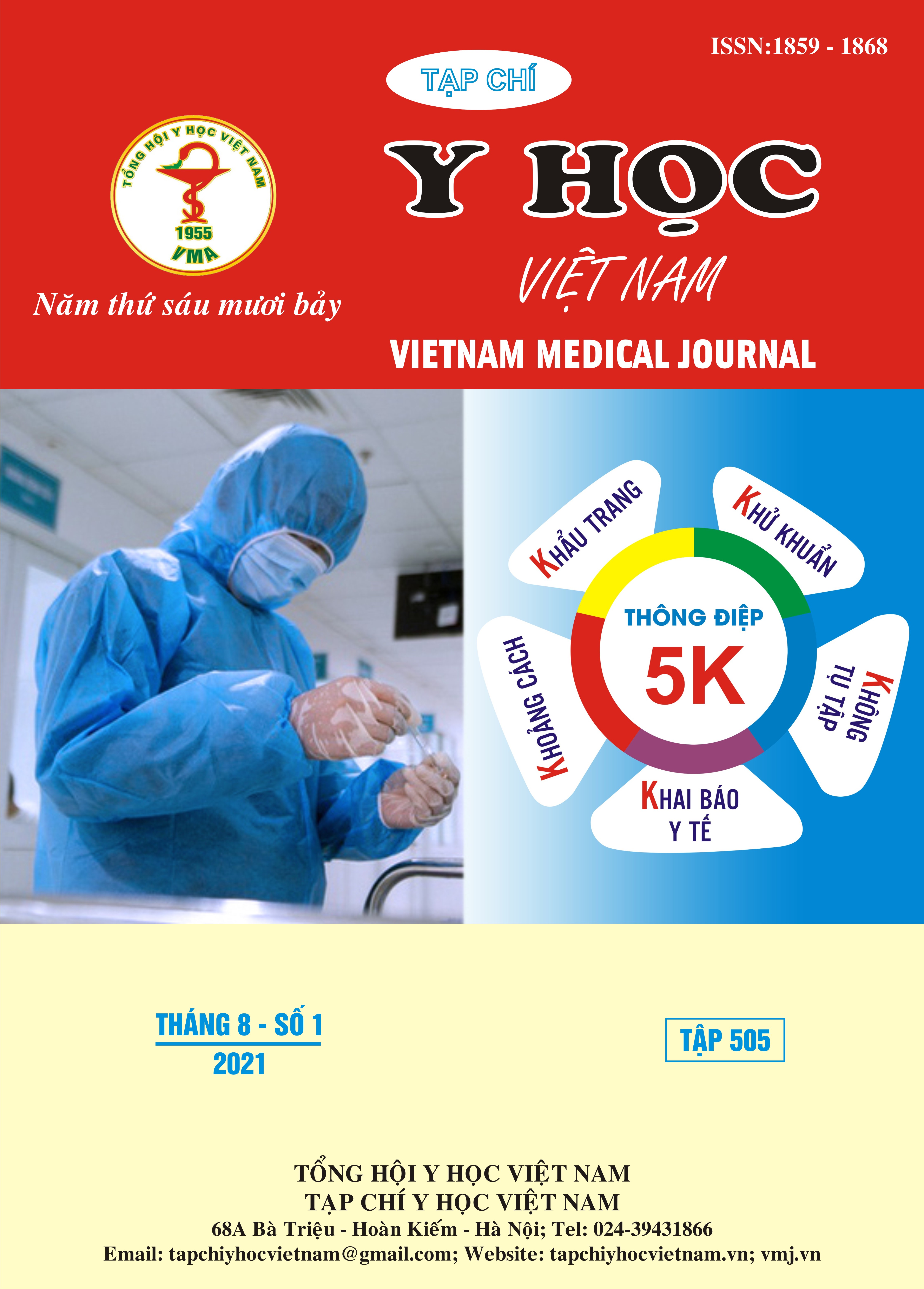NGHIÊN CỨU ỨNG DỤNG VẠT DA CÂN NHÁNH XUYÊN ĐỘNG MẠCH CỔ NÔNG ĐIỀU TRỊ SẸO CO KÉO VÙNG CẰM CỔ VÀ LOÉT MẠN TÍNH VÙNG ĐỈNH CHẨM
Nội dung chính của bài viết
Tóm tắt
Mục tiêu: Nghiên cứu ứng dụng vạt da cân mjamhs xuyên động mạch cổ nông điều trị sẹo co kéo vùng cằm cổ và loét mạn tính vùng đỉnh chẩm. Đối tượng và phương pháp: Nghiên cứu tiến hành phẫu thuật trên 25 bệnh nhân tuổi trung bình 36 tuổi (24 BN có sẹo co kéo vùng cằm cổ và 01 BN có loét mạn tính vùng chẩm), được phẫu thuật sử dụng vạt da cân nhánh xuyên đông mạch cổ nông che phủ tổn khuyết tại trung tâm Phẫu thuật tạo hình, thẩm mỹ và tái tạo, Viện Bỏng Quốc Gia từ tháng10 năm 2014 đến tháng 06 năm 2020. Kết quả: 25 vạt da nhánh xuyên động mạch cổ nông đã được sử dụng. Kích thước vạt da có chiều dài trung bình là 23,36 cm và chiều rộng trung bình là 10,56cm, kích thước vạt da lớn nhất lấy được là 30 x 12cm. Góc xoay vạt da trung bình là 84,2 độ. Có 24 vạt chiếm 96% sống tốt sau phẫu thuật và liền thì đầu, có 1 vạt da hoại tử một phần. Ghi nhận có sự cải thiện về góc ngữa đầu sau phẫu thuật: trước phẫu thuật: 93 độ, sau mổ 1-3 tháng 114,4 độ và sau mổ 6 đến 24 tháng là 129 độ. Kết luận: Vạt da cân nhánh xuyên động mạch cổ nông ứng dụng trong điều trị cho sẹo co kéo vùng cằm cổ và loét mạn tính vùng đỉnh chẩm cho kết quả tốt.
Chi tiết bài viết
Từ khóa
Vạt da cân nhánh xuyên, động mạch cổ nông, sẹo co kéo vùng cổ
Tài liệu tham khảo
2. Ogawa R., M. Murakami(2006),” Clincal and Anatomical Study of Surferfical Cervical Artery Flaps: Retrospective Study of Reconstructions with 41 Flaps and the Feasibility of Harvesting Them as Perforator Flaps”, PRSJournal.com, pp95-101, 2006
3. Hyakusoku H., Takizawa Y., Murakami M., et al (1993) Versatility of the free or pedicled superficial cervical artery skin flaps in head and neck burns, Burns, 19 (2) , pp. 169 – 173
4. Hafezi F., Naghibzadeh B., Pegahmehr M.. et al (2008), Extended vertical trapezius fasciocutaneous flap (back flap) in the face and neck burn scar reconstruction, Annals of plastic surgery, 61 (4), pp 441 -446
5. Grishkevich VM. Trapeze-flap plasty: effective method for post- burn neck contracture elimination. Burns. 2010;36(3):383-388.
6. GrishkevichVM. Unilateralcervicalburnscardeformityelimina- tion with contralateral cervicothoracic flap—a new approach. J Burn Care Res. 2012;33(2):e26-31
7. Li H, Zhou Y, Du Z, et al. Strategies for customized neck recon- struction based on the pre-expanded superficial cervical artery flap. J Plast Reconstr Aesthet Surg. 2015;68(8):1064-1071
8. Vinh VQ, Van Anh T, Tien NG, Hyakusoku H, Ogawa R. Bipe- dicled “superthin” free perforator flaps for facial burn scar recon- struction: expanded scope of superthin flaps: a case series. Plast Reconstr Surg Glob Open. 2015;3(8):e493


